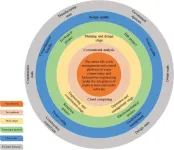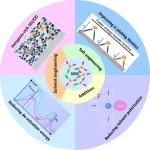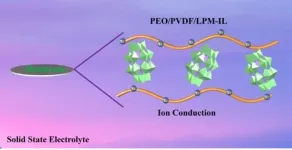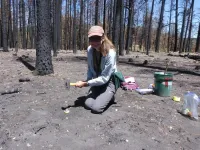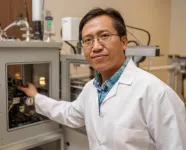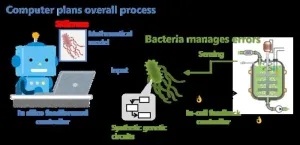(Press-News.org) AURORA, Colo. (October 12, 2023) – The National Institutes of Health’s All of Us Research Program has awarded $30 million to the University of Colorado Anschutz Medical Campus and its partners to establish the Center for Linkage and Acquisition of Data (CLAD). The All of Us Research Program is a historic effort to enroll at least 1 million people who reflect the diversity of the United States. Providing researchers with the data will help drive new discoveries and advance precision medicine.
“This is an exciting national initiative to bring together novel data to better understand health,” says Melissa Haendel, PhD, FACMI, Chief Research Informatics Officer at CU Anschutz and PI of this award. “We at CU Anschutz Medical Campus are honored to lead these efforts.”
During the initial 18-month base period of the award, the CLAD team aims to securely acquire health care claims and mortality data, as well as environmental and social data based on the Centers for Disease Control and Prevention’s Environmental Justice Index. The award may be renewed annually for up to four additional years, pending the availability of funds, so the team can build on this work and include additional data streams for research.
The University of Colorado Anschutz Medical Campus was selected following an extensive and competitive process. “CLAD will enhance the understanding of health influences over time for All of Us researchers,” says Haendel. “The methods proposed have the power to advance healthcare best practices in personalized medicine on national, regional and local scales.”
Currently, the All of Us Researcher Workbench includes information actively donated by participants – data from biosamples, surveys, wearable devices, physical measurements, and electronic health records (EHRs) – with safeguards in place to protect privacy. The new award aims to enhance these data to fill in gaps, as well as add new data streams that would make the information provided by participants even more impactful for advancing research on a range of diseases and conditions. These new data streams would pull from existing datasets and sources without requiring additional action by participants.
“I am enthusiastic about this leading-edge project and joining the All of Us team,” says Anita Walden, MS, CU School of Medicine, who will lead management of the program. “The CLAD effort has the potential to transform research and impact the health of diverse communities by linking people to more of their data. This will enrich participant data, creating a revolutionary resource to answer questions we have yet to ask.”
The CLAD awardees will also explore ways to overcome technical challenges associated with linking EHR data from health information networks for participants who have consented to share this information.
CLAD will acquire and process the linked data within a secure platform before delivering it to the All of Us Data and Research Center, which curates data and makes it accessible through the Researcher Workbench to registered researchers. The CLAD team will also develop analytical tools to help researchers jumpstart their analyses once the data are available within the Researcher Workbench. All program partners must adhere to stringent NIH and All of Us data security and privacy requirements in carrying out their work.
The team is bringing together leading academic, data, security and software organizations, to form a comprehensive team including Axle Informatics, Datavant, Emory University, Johns Hopkins University, Medical College of Wisconsin, OCHIN, Palantir Technologies, the University of Florida, the University of Iowa, the University of North Carolina Chapel Hill, the University of Washington, and ZeroTrust.
The data streams enabled through CLAD will further the program’s efforts to build one of the most diverse biomedical data resources of its kind that can be used by researchers to gain insights into the biological, environmental, and behavioral factors that influence health.
###
The Center for Linkage and Acquistion of Data, led by the University of Colorado Anschutz Medical Campus, is funded by National Institutes of Health award OT2OD036113.
All of Us is a registered service mark of the U.S. Department of Health & Human Services (HHS).
About the University of Colorado Anschutz Medical Campus
The University of Colorado Anschutz Medical Campus is a world-class medical destination at the forefront of transformative science, medicine, education and patient care. The campus encompasses the University of Colorado health professional schools, more than 60 centers and institutes, and two nationally ranked independent hospitals - UCHealth University of Colorado Hospital and Children's Hospital Colorado - that treat more than two million adult and pediatric patients each year. Innovative, interconnected and highly collaborative, the University of Colorado Anschutz Medical Campus delivers life-changing treatments, patient care and professional training and conducts world-renowned research fueled by over $690 million in research grants. For more information, visit www.cuanschutz.edu.
END
A research team has developed a platform based on building information modeling (BIM) technology for use in the design of hydropower hub buildings. The platform, called HydroBIM, combines BIM technology with geographic information systems, computer-aided engineering, internet of things, artificial intelligence, and other technologies. The HydroBIM platform provides a comprehensive approach to digital design, intelligent construction, and smart operation of hydropower engineering projects.
The work ...
Lithium batteries power our phones, computers, many of our cars and so much more — even the drill and weedwhacker. But as technology advances, can they keep up in their current format? No, but there is a way forward, according to a new review paper from researchers at Hong Kong Polytechnic University, by further developing the electrolytes that allow for energy storage and discharge.
The team published their work in Energy Materials and Devices on September 18, 2023.
“Lithium batteries ...
Polyoxometalates (POMs) containing charged lithium ions combined with ionic liquids, increase the ion conductivity of a solid-state electrolyte membrane.
Solid-state lithium-ion batteries depend on the movement of ions (charged atoms) in the solid, rather than liquid, state to either charge or discharge the battery. These solid-state electrolytes are safer, more cost efficient and capable of higher energy densities than batteries that rely on liquid electrolyte solutions, but suffer from low ionic conductivity, or movement of ions, and poor thermal stability. A new composite ...
The future of human-machine interfaces is on the cusp of a revolution with the unveiling of a groundbreaking technology - a stretchable high-resolution multicolor synesthesia display that generates synchronized sound and light as input/output sources. A research team, led by Professor Moon Kee Choi in the Department of Materials Science and Engineering at UNIST, has succeeded in developing this cutting-edge display using transfer-printing techniques, propelling the field of multifunctional displays into new realms of possibility.
Traditionally, multifunctional ...
Researchers from Erasmus School of Economics at Erasmus University Rotterdam, KU Leuven, Universität zu Lübeck, Christian-Albrechts-Universität zu Kiel, and FoodLabs published a new Journal of Marketing article that investigates the multichannel impact of brand stores by digital-native FMCG brands.
The study, forthcoming in the Journal of Marketing, is titled “Assessing the Multichannel Impact of Brand Store Entry by a Digital-Native Grocery Brand” and is authored ...
Contributed by Arianna Soldati, GSA Science Communication Fellow
Pittsburgh, Pa., USA: An eruption of Old Faithful Geyser in Yellowstone National Park is a sight to behold. Indeed, millions of tourists flock to the park each year to see it. Hot water and steam are ejected in the air to a height of 100–180 feet approximately every 90 minutes. Many adjectives come to mind to describe it: powerful, mesmerizing, unique, otherworldly . . . homey? Not so much. Yet new research by Lisa M. Keller, published on PNAS Nexus earlier this year and to be presented on Sunday at the Geological Society of America’s GSA Connects 2023 meeting, shows that for ...
Pittsburgh, Pa., USA: On 8 June 2020, the Mangum Fire ignited 16 miles north of the North Rim of Grand Canyon National Park. By the time it was mostly contained, about a month later, the fire had burned over 70,000 acres of land.
April Phinney, a M.Sc. candidate at Utah State University, immediately started drafting a burn intensity map based on remote sensing data. Six months later, she set boots on the burned ground and started collecting soil samples, hoping they would contain quartz grains. This research ...
The Cancer Prevention and Research Institute of Texas (CPRIT) recently awarded grants to four researchers from the Texas Tech University Health Sciences Center (TTUHSC). Combined, the grants will provide nearly $2.3 million that TTUHSC will use to conduct a pair of two-year pilot studies, acquire a state-of-the-art piece of laboratory equipment known as a cell sorter, and administer a colorectal cancer screening and prevention program.
Three of the recipients are from the TTUHSC School of Medicine, including Hongjun (Henry) Liang, Ph.D., a professor in the Department of Cell Physiology and Molecular Biophysics; Min Kang, Pharm.D., a professor ...
One of the primary goals of bioprocess engineering is to increase the yield of the desired material while maintaining high production rates and low raw material utilization. This optimization is usually accomplished by controlling the behavior of microorganisms used in the process and ensuring that their biological capabilities are fully utilized. This control may be computerized (in silico feedforward) or autonomous (in-cell feedback) which predicts the optimization based on inputs received. However, a process-model mismatch (PMM) occurs when there is a discrepancy between the predicted and actual production processes.
A recent paper published in Scientific Reports demonstrates a ...
The demand for efficient energy storage systems is ever increasing, especially due to the recent emergence of intermittent renewable energy and the adoption of electric vehicles. In this regard, lithium–sulfur batteries (LSBs), which can store three to five times more energy than traditional lithium-ion batteries, have emerged as a promising solution.
LSBs use lithium as the anode and sulfur as the cathode, but this combination poses challenges. One significant issue is the “shuttle effect,” in which intermediate lithium polysulfide ...
